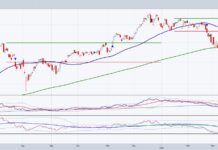Financial literacy. On cue with stock market sell-offs, recessions, and economic slowdowns, rest assured that a spike in articles, commentary and op-eds lamenting our nation’s financial acumen isn’t far behind.
These lectures sport a common theme – ‘america is completely financially illiterate and we are doomed’ if we don’t quickly sharpen our pencil and submit to conventional wisdom.
In an effort to help with this process, and in light of recent market developments, I’ve developed my own five question quiz:
- Is the Stock Market rigged?
- If the Federal Reserve raises interest rates, how much more will your mortgage cost?
- Please apply the rule of 72 to Japanese bonds (2yr & 10yr JGB’s please)
- What is the youngest age you could remember 1% money rates?
- If you purchased a 30-year Treasury Bond 30 years ago today, by how much would you have underperformed the S&P 500 index fund? (assumption – no interest/dividends reinvested)
Perhaps this is a bit simplistic compared to traditional gauges of financial knowledge, and maybe it could be dismissed as whimsical. This is intended as 100% serious. Here are your answers:
1. An 11-year old recently asked me this question. That insight comes from somewhere. The answers to this question might alarm us (or maybe not). My rationale for starting with this is that if investors/financial participants think the stock market is rigged, it may explain a reluctantcy in learning the lessons the finance industry so desires us to learn. We all desire a level-playing field and if stock markets resemble a carnival game trying to knock down weighted milk jugs with a lightweight ball, the greater the likelihood participants keep walking.
2. Two months after Federal Reserve Chair Janet Yellen’s first interest rate increase, we now have lower mortgage rates. This comes after consumers were warned about how much more expensive borrowing would be going forward. The latest, greatest refinance cycle brought to you by a rate hike – go figure.
3. The rule of 72 dominated the 1990’s markets as you could immediately assess how quickly your investments would double by dividing 72 by your expected return (i.e. a 9% rate of return would result in a doubling over 8 years). As of the writing of this article, 2-yr and 10-yr Japanese Government Bonds sported negative yields rendering the rule of 72 impossible.
4. If you were born on December 16th, 2008 you and the Federal Reserve’s last rate cut (sending rates under 1%) are now seven years old. If we assume a child’s first banking memories come when they are 7 years old, you could easily be 14 years old and never really remember your stash of Christmas and Birthday money earning interest beyond a few pennies here and there.
5. Trick question, sort of. On the day I wrote this 2/11/2016, the S&P 500 intra-day traded at 1817.50. If we go back 30 years to 2/11/1986, the S&P closed at 215.92, resulting in an annualized rate of return of 7.36%. Researching 30-year Treasury Bonds, I found a May of 1986 bond offering yielding 7.37%, essentially identical. Yes, I realize dividends are omitted, but the commonly held belief is that stocks always perform best over long periods of time. Maybe after a series of technology, real estate, and commodity bubbles bursting, it’s not so easy.
We are living in an amazing period – difficult to comprehend at times. Simple answers are getting incredibly more elusive.
What exactly is financial literacy today? If it’s a self-serving 1990’s version perpetuated by Wall Street banks and asset managers, I truly question its helpfulness. Maybe it’s much more individualized than we realize, and lets push aside attempts to make investors more insecure than they already are.
Maybe financial literacy is as simple as navigating the best as one can.
Twitter: @HeartCapital
Any opinions expressed herein are solely those of the author and do not in any way represent the view or opinions of any other person or entity.








